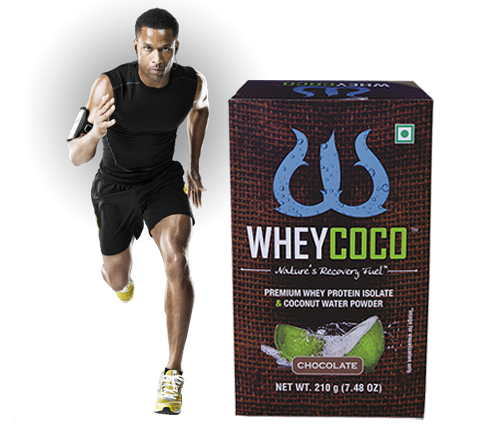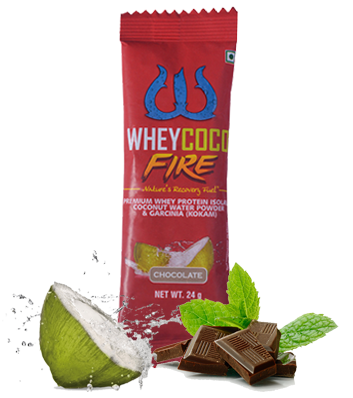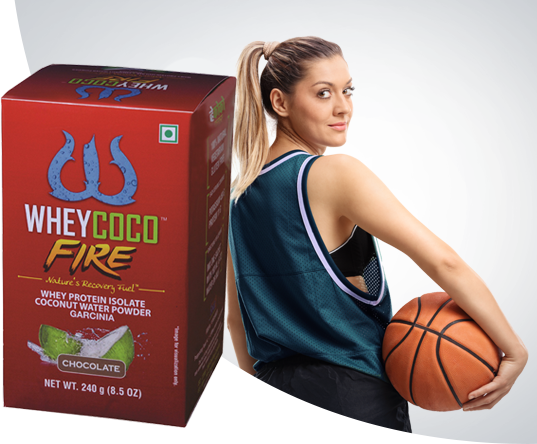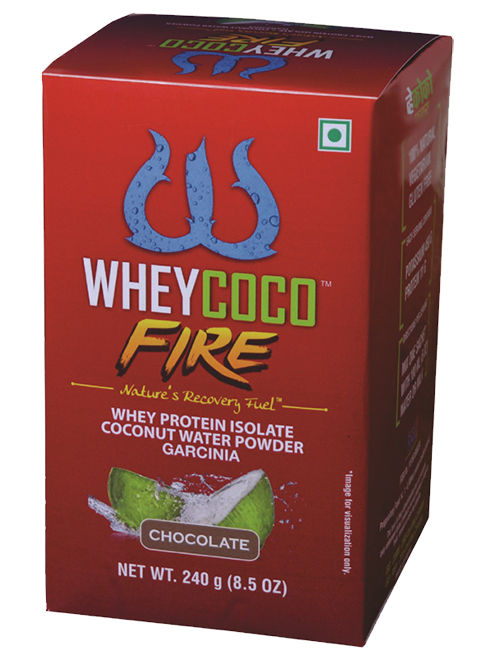PRODUCTS

WheyCoco Chocolate
Premium Whey Isolate Protein
- Clean Label” Mentality
- Natural and Organic Movement
- Functional Beverages to meet everyday Health Goals
- Convenient and Economical
WheyCoco Fire
Garcinia( Kokum) May help in weight loss management
- Clean Label” Mentality
- Natural and Organic Movement
- Functional Beverages to meet everyday Health Goals
- Convenient and Economical
Types of whey protein
There are essentially three types of whey proteins: Whey protein concentrate, Whey protein isolate and Hydrolyzed whey protein.
Whey protein is one of two categories of proteins found in dairy (along with casein) and is a byproduct of cheese and yogurt production. Basically, you start with liquid milk and strain out the curds for cheese or yogurt, leaving whey behind.
Once it’s processed, whey protein is usually sold as a powder on its own, or mixed into smoothie powders and drink mixes that also contain other nutrients. It’s used as a supplement to address malnutrition and protein deficiencies or most often in an effort to increase athletic performance and improve body composition.
Before being absorbed in the body, the large fractions of protein are broken down by the body’s digestive enzymes into amino acids. Amino acids are then pieced back together in different combinations to make new proteins the body will use to build muscle, enzymes, hormones and other substances needed for structure and function.
Whey protein supplies all nine essential amino acids and is particularly high in leucine and cysteine. Protein sources that provide leucine are thought to be the strongest determinant of muscle protein synthesis and growth, which is why it is the preferred choice for most gym goers.
You’ll find whey protein sold as whey protein or as whey protein isolate. The isolate type means that it has gone through further concentration to isolate the protein even more. This makes it slightly higher in protein, but also lower in certain nutrients, including fat and lactose.
Whey protein is known to have a relatively high biological value, meaning that the amino acids found within it are more efficiently used by the body than other proteins. This is huge, because if you eat healthy foods your body can’t use, it’s a total waste of time.
Research has suggested that consuming whey following resistance training could result in enhanced muscle function and decreased muscle recovery time.
Another small study done on college-aged males suggested that ingestion of 48 grams of whey protein isolate three days a week for eight weeks resulted in increased lean body mass, muscle mass, strength and power, as well as a decrease in overall fat mass.
Other studies however, have shown no specific benefits. Of course, protein after a super intense workout, in general, is a good idea.
Types of whey protein
There are essentially three types of whey proteins: Whey protein concentrate, Whey protein isolate and Hydrolyzed whey protein.
Many whey protein powder supplements that you find for sale often list whey protein concentrate on the label as the first ingredient, so let’s start with this one. The amount of protein in whey protein concentrate can vary from a low of 25 percent to a high of 89 percent. In sports nutrition, the most common type of whey protein is 80 percent protein (abbreviated WPC or WPC80). The rest of the product consists of lactose (4 to 8 percent), fat, minerals, and moisture.
Whey protein isolate (most typically abbreviated WPI or WPI90) is the “purest” form of whey protein used for commercial applications, containing 90 to 95 percent protein. It is an excellent source of protein for people who are lactose intolerant, as it contains little or no lactose. WPI is also very low in fat. The price of WPI products is usually significantly higher than WPC due to the purity and higher protein content of the product.
Often abbreviated as WPH, this product is made when the relatively large protein polypeptides in the whey protein have been broken down into much shorter chains (e.g., di- and tripeptides). This allows the whey protein to be digested and absorbed much faster in the intestines and may reduce the potential for allergic reactions. Hydrolyzed whey protein is very expensive, has a bitter or acidic taste, and must be specially treated to allow it to be soluble/mixable in water and other beverages. This type of protein is most often found in baby formulas and specialized medical nutrition products.













